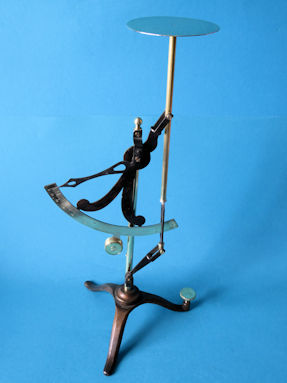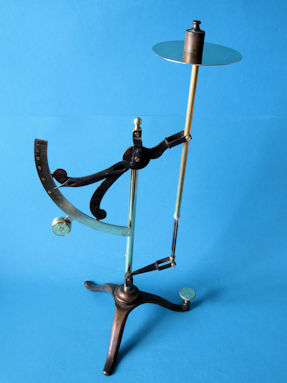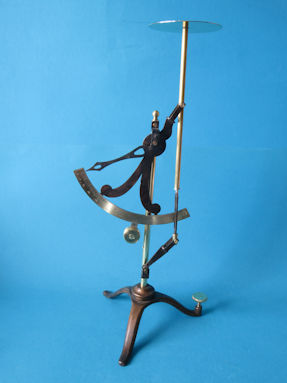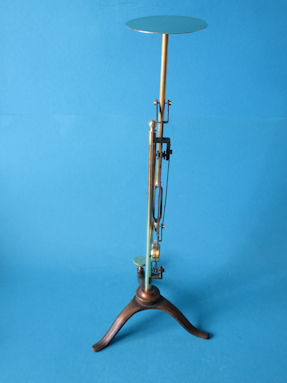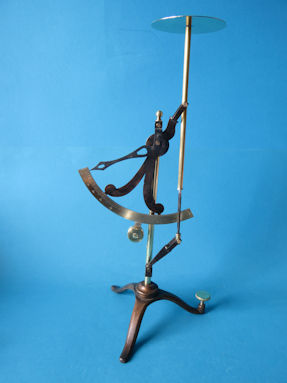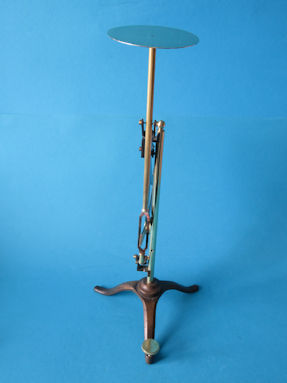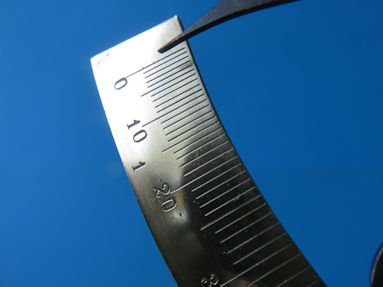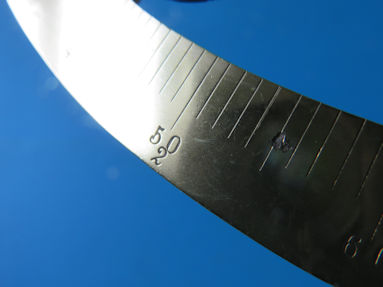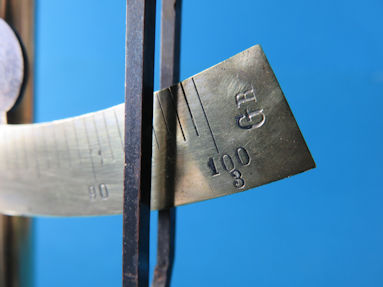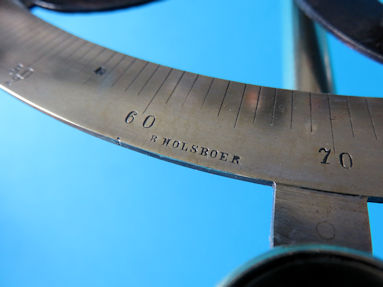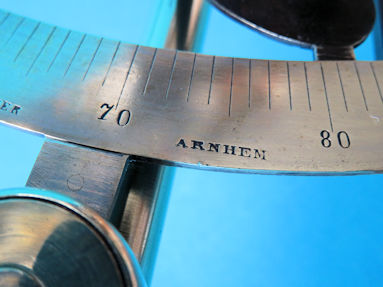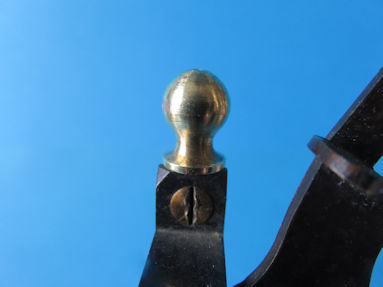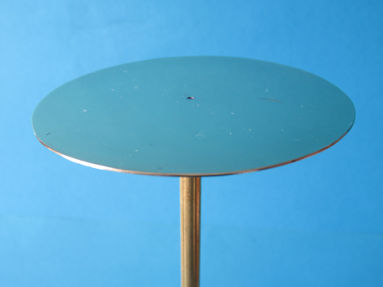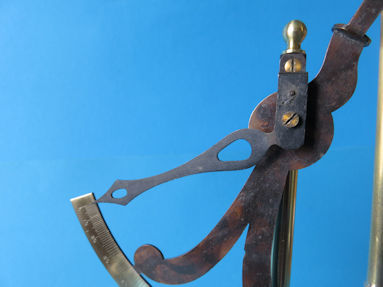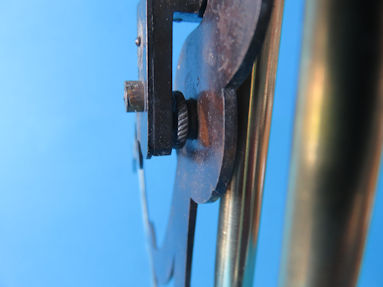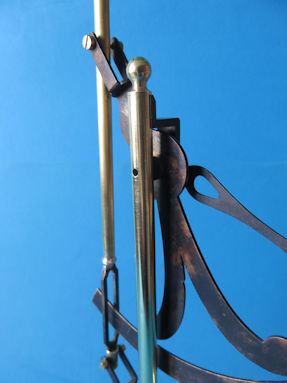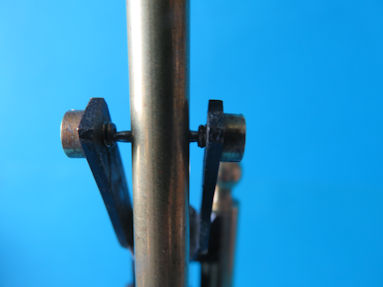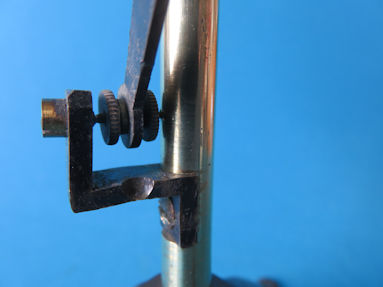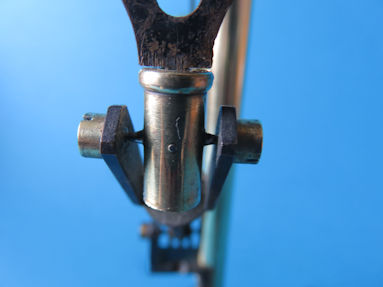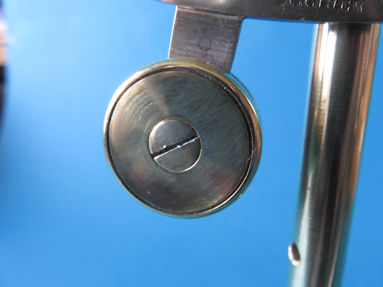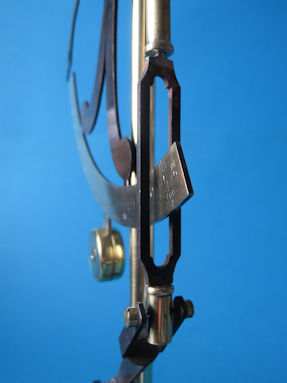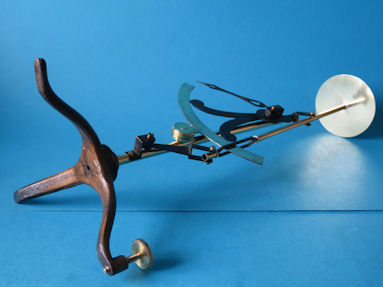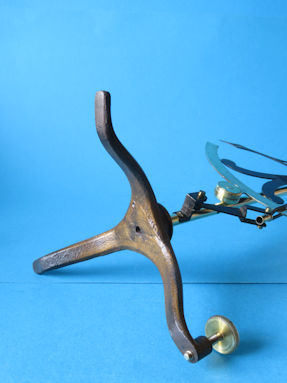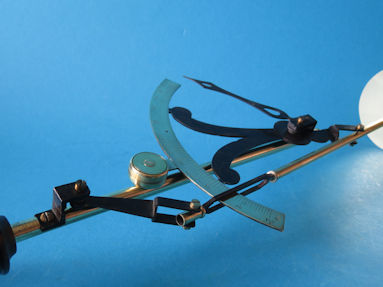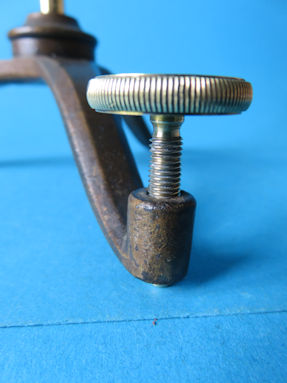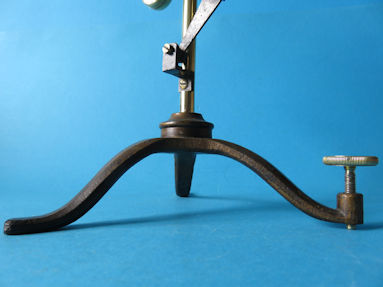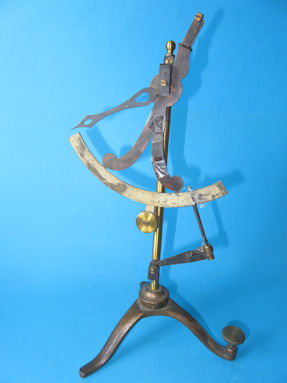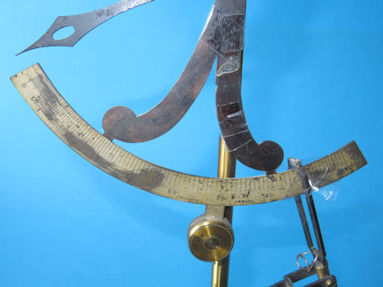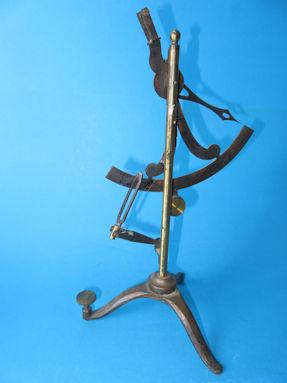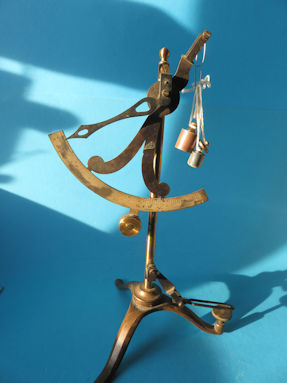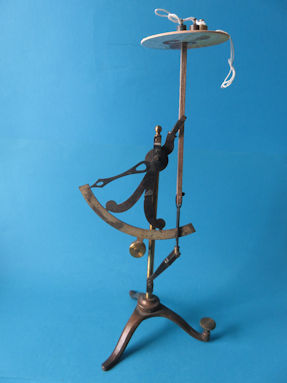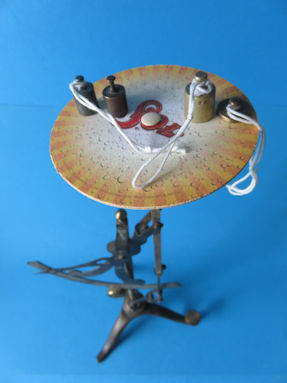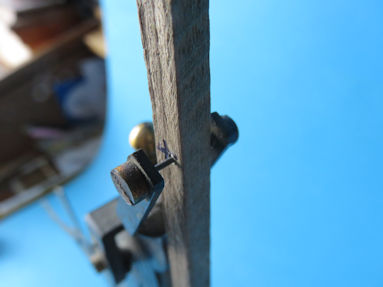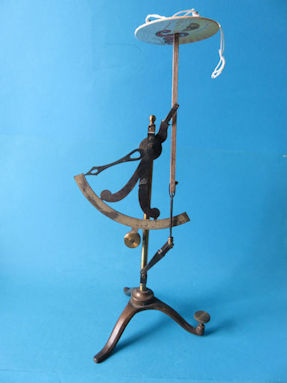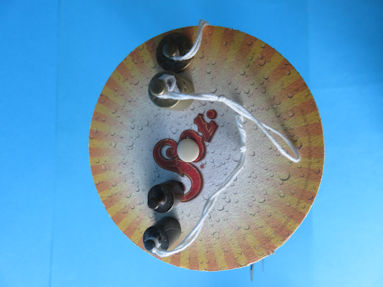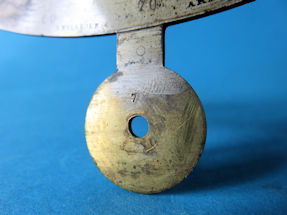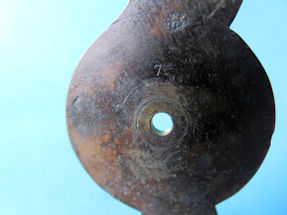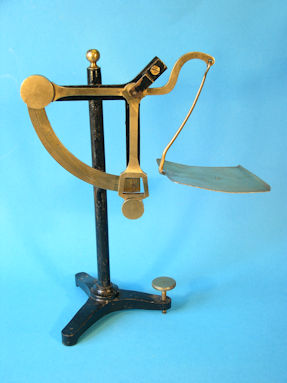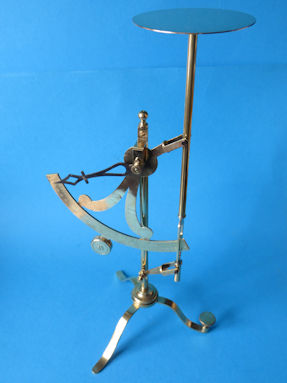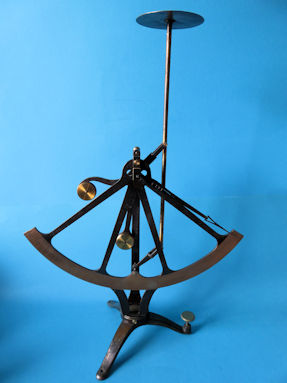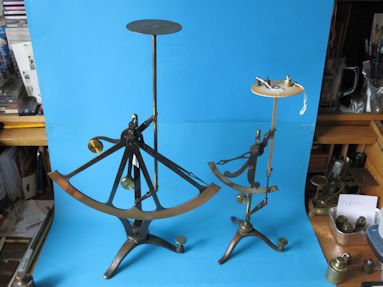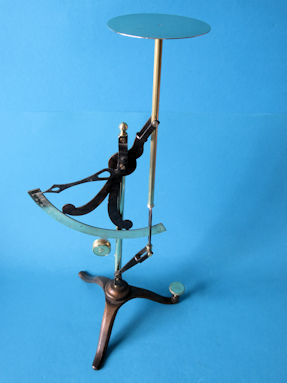
weger
This 43 centimeter high letter scale bears the name of the maker and the place of business on the brass scale: B. HOLSBOER ARNHEM. B. Holsboer's company started on August 3, 1867. The founder was Berend Holsboer (1832 - 1895†).
The measuring scale up to 100 grams is subdivided per gram. Striking are the number 1 at the mark of 15 grams, the number 2 below the 50 grams, and the number 3 below the 100 grams. The meaning of this is simple: up to 15 grams 1 stamp is sufficient, above that up to 50 grams 2 stamps are required, and above 50 grams up to 100 grams 3 stamps are required, for domestic letter franking. In the book Binnenlandse en Internationale Posttarieven van Nederland 1850-1990 [Dutch, translated: Domestic and International Postal Rates of the Netherlands 1850-1990] by Mr. W.S. da Costa this rate is found to be in effect from September 1, 1855 to March 15, 1882. The postage required was 5 cents through 15 grams, 10 cents (2x5) through 50 grams, and 15 cents (3x5) from 50 to 100 grams. On the Holsboer letter scales shown earlier, the 100 grams, the 250 grams, and the 200 grams this letter postage designation is also used, see the relevant pages and the photos at the bottom of this page. Several parts of this letter scale have the number 7.
I saw this letter scale on an internet site with second-hand articles. The scale was not complete. The letter platform and the long vertically standing tube containing the upper shaft with pointed ends were missing. Also, the upper threaded end of the lower vertical port-shaped part was missing. I determined the permitted weight of the missing parts by hanging weights on a temporary axle until the pointer of the letter scale reached zero grams. With some measuring it became clear how long the replacement tube had to be. This has been verified with a square
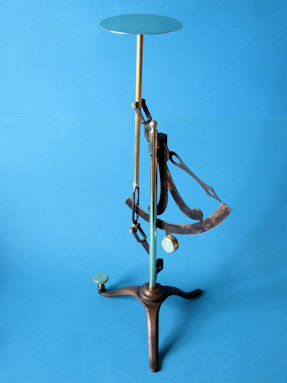
back of the letter scale
